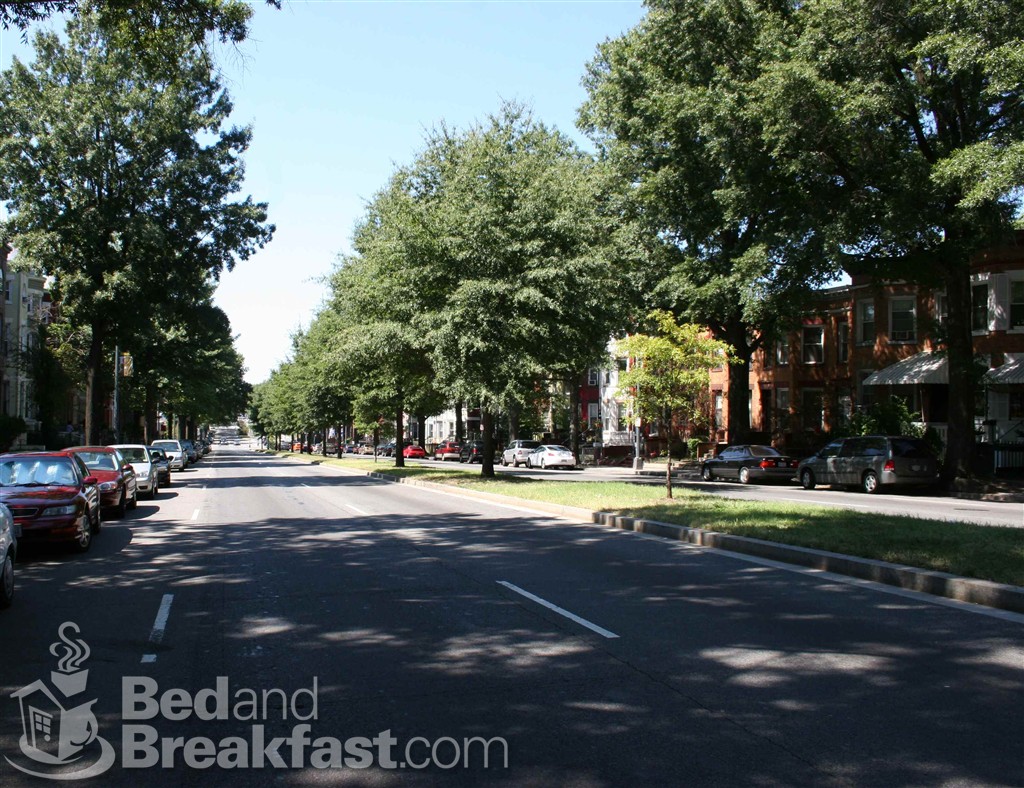
If we could go back in time to the 1950s (or if we just looked at some pictures), we'd not only see lots of bobby socks, poodle skirts and flat tops, we'd also find that most of the residential streets across Nebraska were lined with large-canopy trees. Although total species composition may have varied from town to town, it was the American elm that truly dominated the scene. The elm's large arching growth and adaptability to our weather extremes made it an ideal species for street-side planting. The canopy of the many trees planted opposite each other across the street often met in the middle, creating a leafy tunnel of vegetation over the roadway.
Unfortunately, things changed. Dutch elm disease was racing across the country, wiping out most of the American elms in its path. The disease reached Nebraska in the early 1960s and by the mid-1970s most of our elms were gone. Whole streets were laid bare almost overnight. Inventories from the Nebraska Forest Service show that many communities lost up to 50 percent of their tree canopy within a few short years. Inventories also reveal that much of this lost canopy has not been restored.
Along with the trees themselves, gone were the many benefits these trees provided: shade, wind protection, stormwater capture, songbirds and glorious visual appeal. Across a community, summer temperatures were suddenly 5 to 10 degrees warmer, stormwater runoff increased by millions of gallons, property values dropped and the collective look and feel of our communities changed.
Although many, if not most, communities undertook efforts to replant trees after the elms died, several factors prevented us from restoring the canopy that was lost. For one thing, now most of us spend the majority of our days in air-conditioned comfort and depend far less directly on the cooling effect of shading from trees. Also, the desire to maintain near-perfect carpets of lawn means many of us regard trees, specifically the shade they cast and the leaves they drop, as problems to be avoided. And we've come to rely on a fairly narrow palette of cloned trees, often lower-growing types selected primarily for spring flowers or fall color. These trees just do not provide the same climatic protection and economic benefits that large trees provide. And finally, when we have planted larger canopy trees, we have often relied on a narrow list of species. Siberian elm, hackberry, green ash and silver maple dominate street plantings across much of the state. Green and white ash have been especially popular and now make up 30 percent or more of the street tree inventory in many communities. The sad truth is that ash trees could be wiped out in the coming years by emerald ash borer, which is quickly heading our way.
Clearly the time has come to aggressively plant shade trees along our streets and to do it in a way that better ensures long-term sustainability. It is hoped that the decline of the American elm will have taught us two important lessons. First, community forests should be seen as a valuable part of a community's infrastructure, its "green infrastructure" if you will, requiring significant and ongoing efforts in evaluation, planting and care. Second, we must strive for greater species diversity to lessen the impact of future diseases and insect pests. As a general rule, no single species should comprise more than 10 percent of a community's tree inventory. Thankfully, research and development of new tree species and hybrids, as well as more than 150 years of tree-planting trials in Nebraska, reveal that there are many other shade tree species and hybrids worthy of planting along our streets. Some of the best include:
-- American Elm: Ironically, research has revealed several cultivars of American elm that are resistant to Dutch elm disease and are worthy of once again being planted along our streets, cultivars like 'Valley Forge', 'New Harmony' and 'Jefferson'. Several elm hybrids have also proven adaptable to our region, including 'Triumph', 'Frontier', 'Accolade', 'Discovery' and 'Vanguard'.
-- Oak species worthy of street tree planting include bur, red, English, chestnut and sawtooth.
-- Hackberry: Although over-planted in some communities, this cousin of the elm remains one of the best street trees available.
-- Coffeetree is an easy-to-grow native adaptable to a wide range of conditions. Male selected clones such as 'Espresso' won't develop seed pods.
-- Maples: Silver maple is over-planted but other maples to consider include Midwest native sugar maple and miyabe maple from Eurasia.
-- Sycamore: Where space allows, sycamore and its hybrid cousin, London planetree, deserve to be planted more. Their tall growth and white, mottled bark adds variety to the landscape.
-- Other suitable street trees include tulip poplar, sweetgum, buckeye, black cherry, freeman maple, honey locust, linden, walnut, pecan and cottonwood etc. Think diversity.
So let's get with it. The planting of large-growing, canopy-forming trees along our streets is one of the best ways to help make our communities more attractive, comfortable and sustainable. By doing so we can lower our summer temperatures, block annoying winds, reduce energy consumption, increase wildlife diversity, capture millions of gallons of stormwater, make our air more breathable and leave a lasting legacy for the next generation to learn and benefit from. To learn more about the value of trees, the best species to plant and possible funding sources for street tree plantings, visit ReTree Nebraska online at http://www.retreenebraska.unl.edu.
-- Nebraska Statewide Arboretum
More details at: http://go.unl.edu/fjn